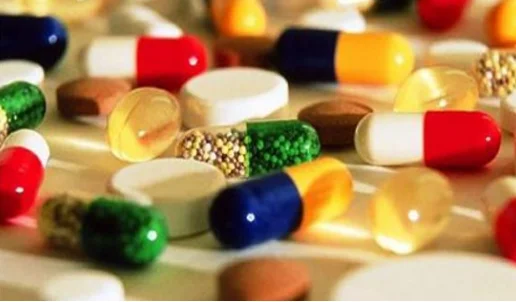Caffeine, Paracetamol, Phenylephrine Hydrochloride and Cetirizine Tablets
Information for the user
Read all of this leaflet carefully because it contains important information for you.
This medicine is available without prescription, however, you still need to use this product carefully to get the best results from it. Keep this leaflet as you may need to read it again. Ask your pharmacist if you need more information or advice.
1.What is this medicine and what is it used for?
This medicine contains:
- Paracetamol: is a pain reliever (analgesic) and helps reduce your temperature when you have a fever.
- Phenylephrine: is a decongestant to reduce swelling in the passages of the nose to help you breathe more easily.
- Caffeine: helps to increase the pain relief from paracetamol and makes you more.
- Cetirizine: helps in an allergic reaction.
These tablets are used for the relief of the symptoms of colds and flu, including headache, feverishness (high temperature), nasal and sinus congestion and its associated pressure and pain, catarrh, aches and pains.
2. Is this medicine suitable for you?
Do not take this medicine if you:
- Are allergic to paracetamol, phenylephrine, caffeine or any of the other ingredients.
- Are under 12 years of age.
- Have a serious heart condition or cardiovascular disorder(s).
- Have high blood pressure (hypertension).
- Have an overactive thyroid.
- Have an enlarged prostate or other prostate problems.
- Are pregnant.
- Are taking antidepressant drugs called monoamine oxidase inhibitors (MAOI’s), or have taken them within the last 14 days – these are medicines such as phenelzine and isocarboxazid.
- Are taking tricyclic antidepressants, such as imipramine.
Please see your doctor or pharmacist before taking this medicine if you:
- Are breastfeeding.
- Suffer from kidney or liver problems, including alcoholic liver disease or, have alcohol dependence.
- Have a blood vessel disease such as Raynaud’s phenomenon.
- Have heart or circulation.
If you are taking any of the following medicines please see your doctor:
- Medicines to treat high cholesterol levels which reduce the amount of fat in the blood such as colestyramine.
- Medicines to control feeling sick or being sick such as metoclopramide or domperidone.
- Medicines called anticoagulants, which are used to thin the blood such as warfarin or other coumarins – you may take occasional doses of paracetamol but should consult your doctor if you need to take it on regular basis.
- Medicine to lower blood pressure, treat heart or circulatory problems such as beta-blockers (for example atenolol), methyldopa, or ganglion blocking agents (for example trimethaphan camsylate).
Contains paracetamol
Do not take anything else containing paracetamol while taking this medicine.
3. How to take this medicine
Swallow the tablet whole with water. Do not chew.
Adults, the elderly and children 12 years and over:
Do not give to children under 12 years.
Do not take more medicine than the label tells you to. If you do not get better, talk to your doctor.
Avoid too much caffeine in drinks like coffee and tea.
High caffeine intake can cause difficulty sleeping, shaking and an uncomfortable feeling in the chest.
Talk to a doctor at once if you take too much of this medicine even if you feel well. This is because too much paracetamol can cause delayed, serious liver damage. Go to your nearest hospital casualty department. Take your medicine and this leaflet with you.
4. Possible side effects
Most people do not have any side effects while taking this medicine. However, if you experience any of the following side effects, or anything else unusual happens, stop taking the medicine immediately, and see your doctor or pharmacist.
Stop taking this medicine and tell your doctor immediately if you experience:
- Allergic reactions may be severe such as skin rash and itching sometimes with swelling of the mouth or face or shortness of breath.
- Skin rash or peeling, or mouth ulcers.
- Breathing problems. These are more likely if you have experienced them before when taking other painkillers such as ibuprofen or aspirin.
- Unexplained bruising or bleeding.
- Reoccurring fevers or infections.
- Nausea, sudden weight loss, loss of appetite and yellowing of the eyes and yellowing of the eyes and skin.
- Visual disturbances. This is rare but is more likely in those with glaucoma.
- Unusually fast pulse rate or a sensation of an unusually fast or irregular heartbeat.
- Difficulty passing water. This is more likely to occur in men with an enlarged prostate gland.
These reactions are rare.
The following side effects may occur.
Tell your doctor if you get them.
Raised blood pressure, headache, dizziness, difficulty sleeping, nervousness, anxiety, diarrhoea or sickness.
Very rare cases of serious skin reactions have been reported.
Reporting of side effects
If you get any side effects, talk to your doctor, pharmacist or nurse. This includes any possible side effects not listed in this leaflet.
5. How to store your medicine
Keep out of the sight and reach of children.
Do not use this medicine after the expiry date printed on the pack. Do not store above 25°C.
6. What is in this medicine?
It contains the active ingredients: paracetamol 500 mg, caffeine 25 mg and phenylephrine hydrochloride 10 mg and Cetirizine 5 mg.
The other ingredients are maize starch, croscarmellose sodium, sodium lauryl sulphate and magnesium stearate.


